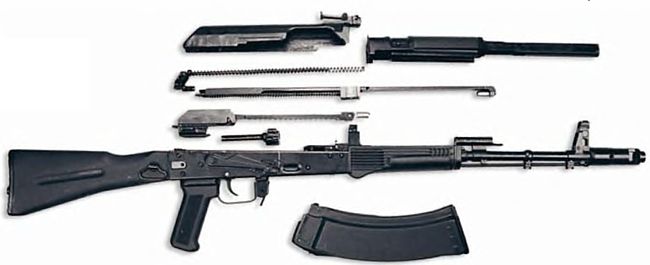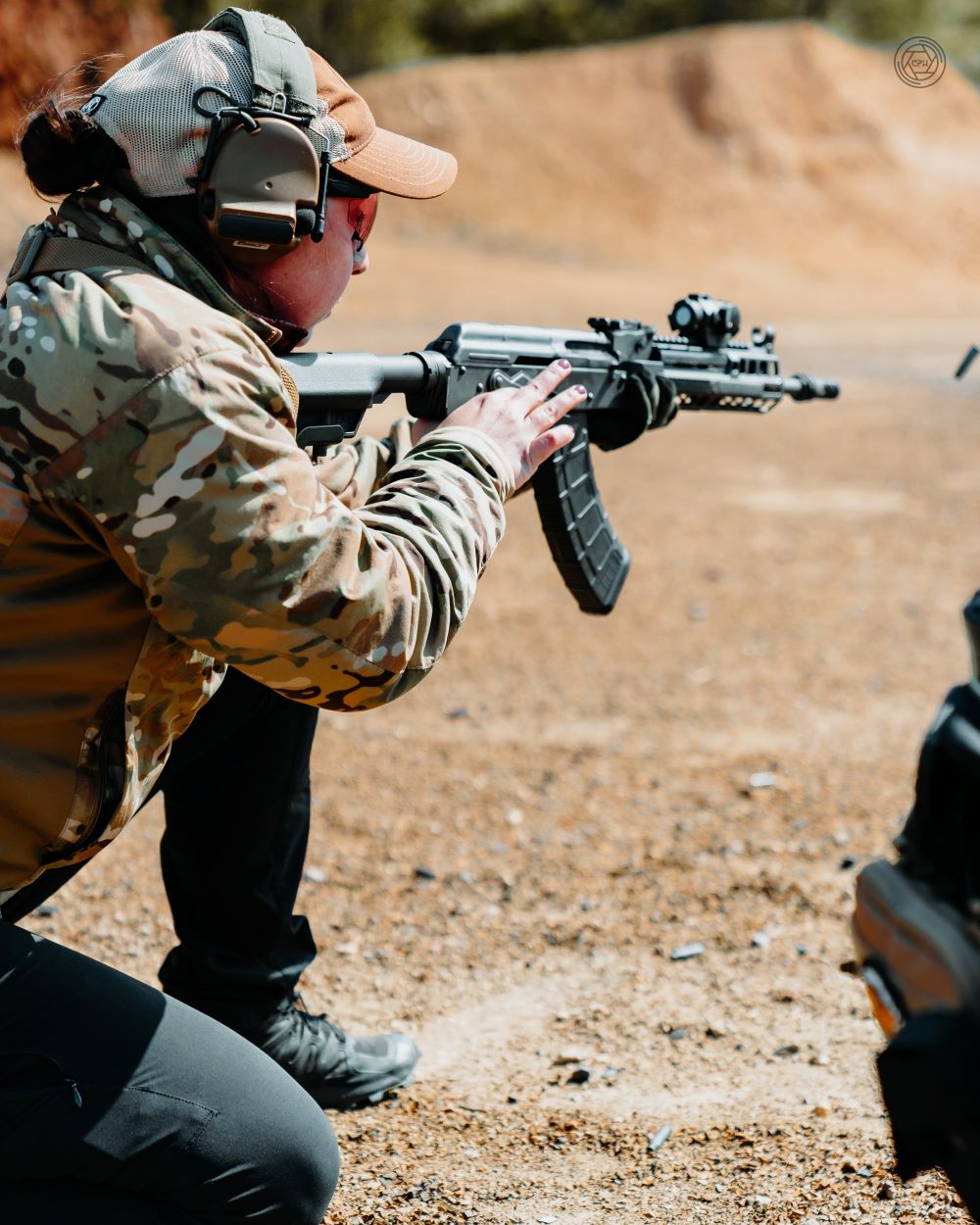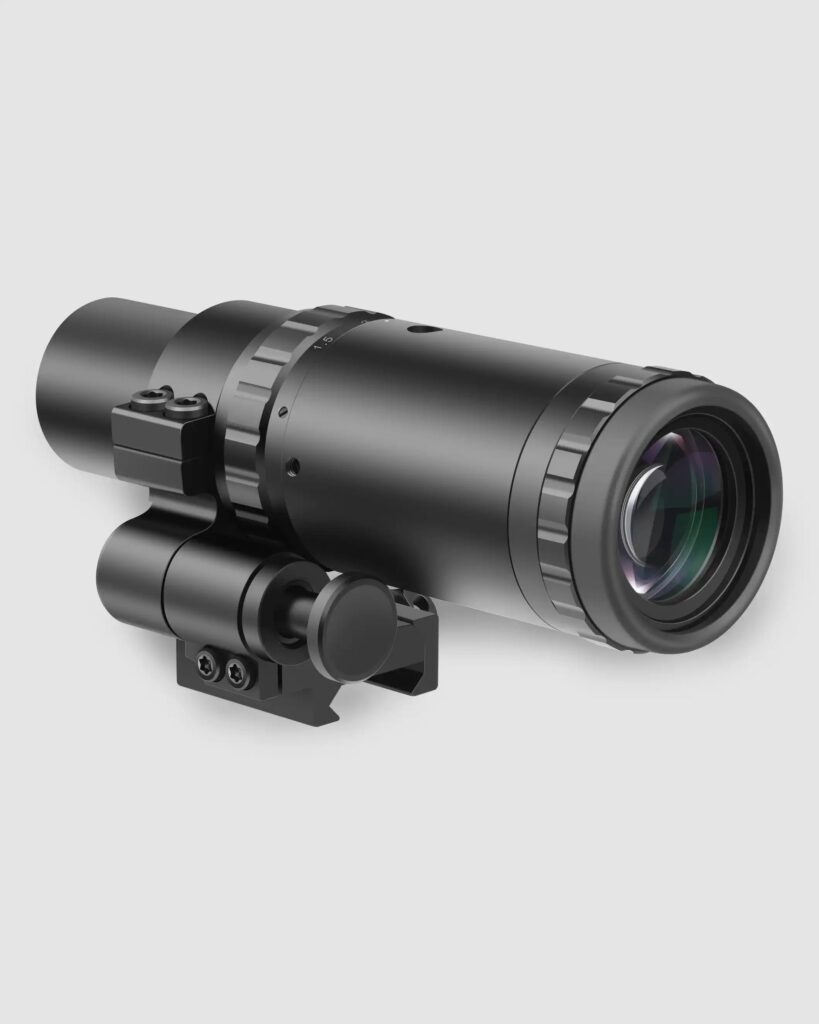The Russians really cling to the AK design. In my opinion, it’s not that the Russians can’t create and adopt a better, more modern rifle. They just don’t really want to. The AK is their brand, and they sell it all over the world. Those sales might drop if the Russian Army stopped using them, plus they are cheap to produce. That’s why the Russians are still using the AK in the form of the AK-12. I know they can make a better rifle because they have an innovation they constantly reject called balanced action.
The few folks who know about balanced action rifles likely know it in the context of the contest in which the AN-94 succeeded. The An-94 beat the balanced action rifles but ultimately didn’t replace the AK-74. It was issued to some special operations and federal forces, but it’s still a fairly rare rifle. That was in the 1990s, but the balanced action idea goes all the way back to the mid-1960s.
The First Balanced Action Rifle
The first rifle that used the balance action recoil system was the AO-38. There isn’t a lot of information on the AO-38. We know it used the BARS system, which was designed in 1965 and fired the 5.45 cartridge. The designer was Peter Tkachev, who would become a rather out-of-the-box thinker when it comes to small arms design. At first glance, the AO-38 looks almost identical to the AK-74. Upon close inspection, the gas tube and receiver cover are a bit different.
Advertisement — Continue Reading Below

The gas tube is different due to how the balance action system works. On your normal AK, you have a gas tube with a gas port. The gas port redirects gas from the previously fired cartridge and redirects the gas into the gun and against the long-stroke gas piston system to allow the weapon to cycle. Long-stroke gas pistons are pretty hefty, and that weight being shot rearwards increases felt recoil.
On a balanced action rifle, there is a gas tube with two gas ports. One gas port works like a standard AK and redirects gas rearward and against the long-stroke gas piston system. The second gas port redirects gas to a secondary piston that moves a weight forward. The rear moving long stroke gas piston and the forward moving weight move at the same time. The forward weight counteracts the recoil of the long-stroke gas piston.
Advertisement — Continue Reading Below

The two moving parts are kept in sync by a fairly complicated gear system. This requires some extra room, and the two moving parts require some offsetting to work right.
Evolution of the Balanced Action Rifle
Over time, the balanced action design evolved but was never widely adopted. The AL-7 and AL-4 rifles were designed in the 1970s as a competitor to the AK-74 but were too expensive to produce and lost out to the AK-74.
Advertisement — Continue Reading Below
During the Akaban competition, the balanced action system was on full display. Several entries used the BARS design, including entries by Victor Kalashnikov, like the AL-9 and AKB-1. We also saw the AEK-971 and AEK-978 make their debut. The AN-94 ultimately won the contest, but the AEK series had some minor success.

The AEK rifles were adopted in small batches by the MVD Internal Troops and various Russian police agencies. Military forces also adopted small numbers of the improved AEK rifles, now designated the KORD 6P67 and KORD 6P68.
Advertisement — Continue Reading Below
The AEK is where we really saw success with the balanced action. I’m not sure how we designate success since the rifle was only ever produced in small numbers. The Russians expanded the AK 100 series with the 107, 108, and 109 rifles that use the balance action design with 5.45, 5.56, and 7.62×39. These rifles were primarily designed for export. Saigia produced a semi-auto-only MK-107 for sport shooters.

The A-545 and A-762 evolved from the AEK and KORD series of rifles. The A-545 competed with the Russian AK-12, ultimately losing to the cheaper, less complicated AK-12. However, the rifle saw some limited adoption, and it even popped up in Ukraine.
Advertisement — Continue Reading Below
Downsides To The BARS
The BARS system does complete its intended task of reducing recoil. Impressively so. Our best exposure to these guns in the West is the Polenar Tactical video on the MK-107. It seems to be very easy to shoot. The Balanced Action system isn’t without its downsides. As you’d imagine, it’s fairly expensive to produce. It removes some of the simplicity of the AK series.

The gear system is complicated, and I imagine if it fails in any way, the gun is done for. This gear system and the small parts used to secure it would seem to be a weak point. Would money and time invested in the system improve it? Maybe, but the small orders of the balanced action guns aren’t going to cause some great innovation.
Advertisement — Continue Reading Below
Admittedly, it’s a complicated way to reduce recoil, but it is still a fascinating system. It makes me wonder, after all that effort and complicated design, did the Russian designers outside of Dragunov every consider a short-stroke gas piston?















